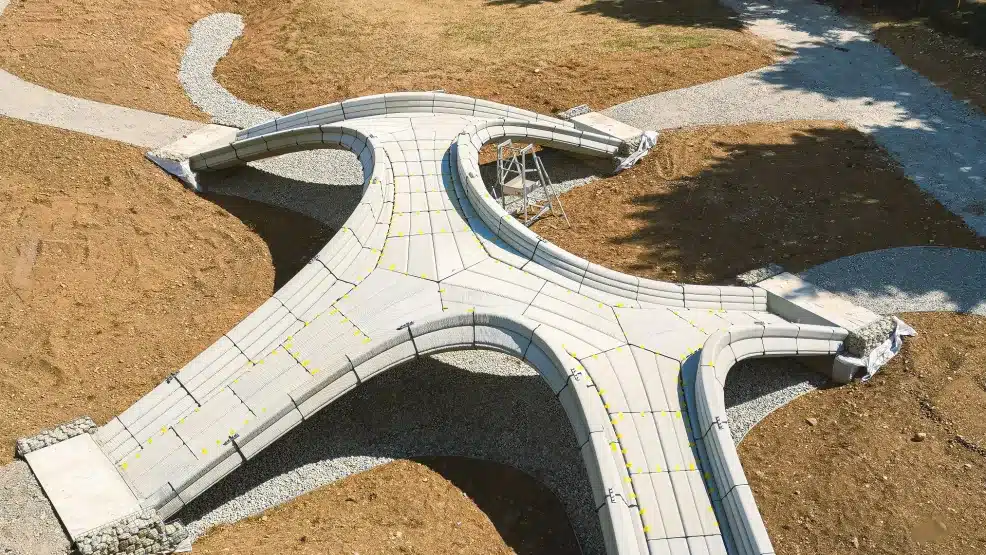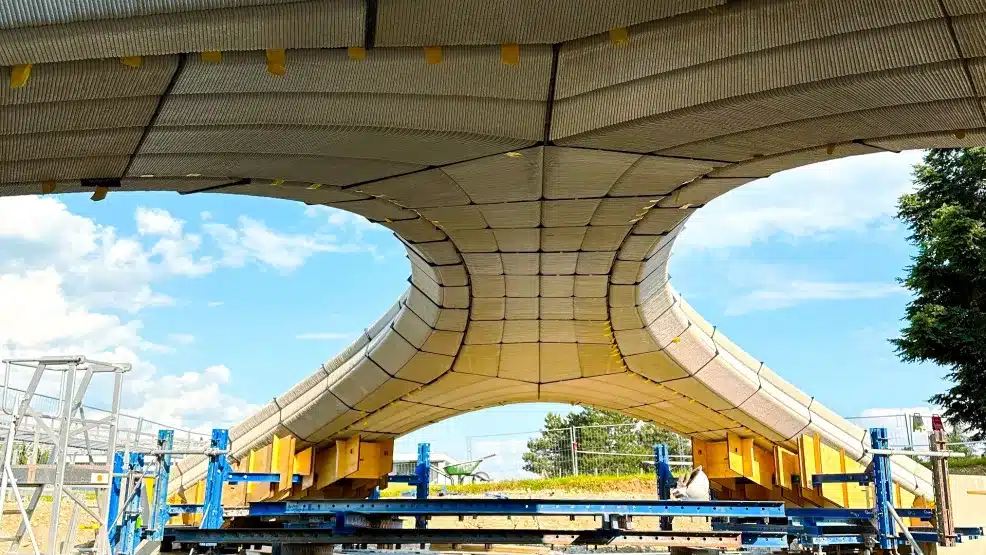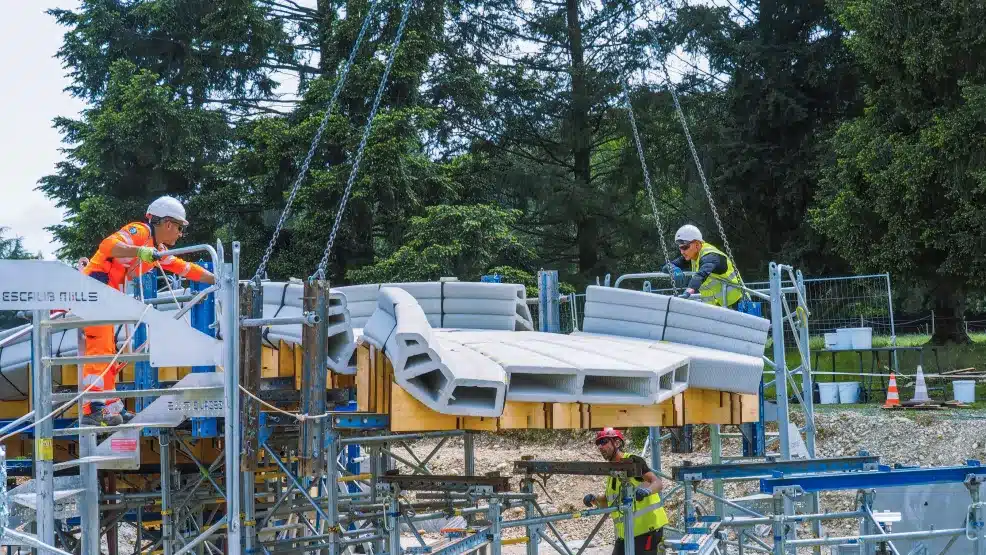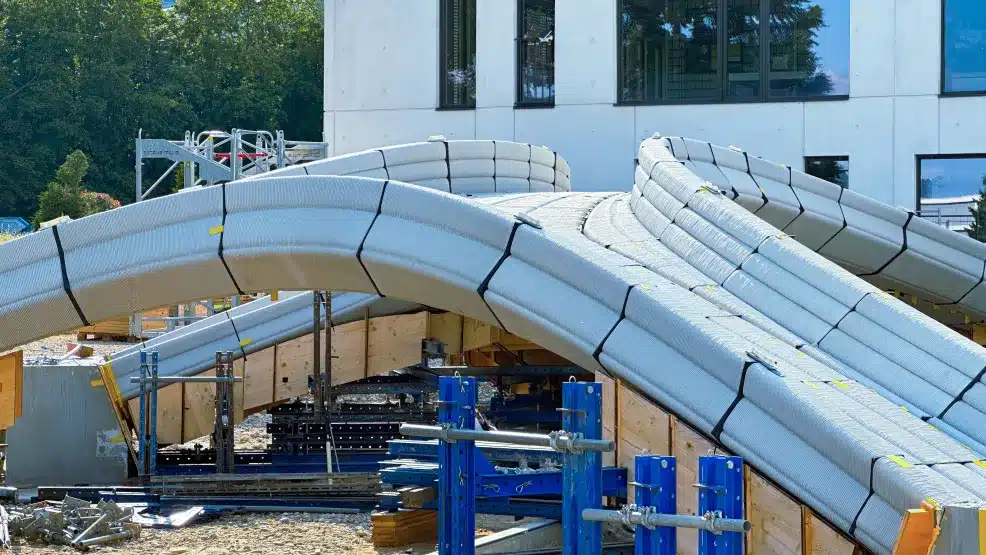Holcim, a leading 3D concrete printing company, has unveiled the Phoenix bridge, a compelling successor to the award-winning ‘Striatus’ showcased at the 2021 Venice Biennale of Architecture. Collaborating with esteemed partners such as the Block Research Group at ETH Zurich, Zaha Hadid Architects Computation and Design Group, and incremental3D, Holcim is dedicated to exploring scalable sustainable infrastructure solutions through the innovative Phoenix project.
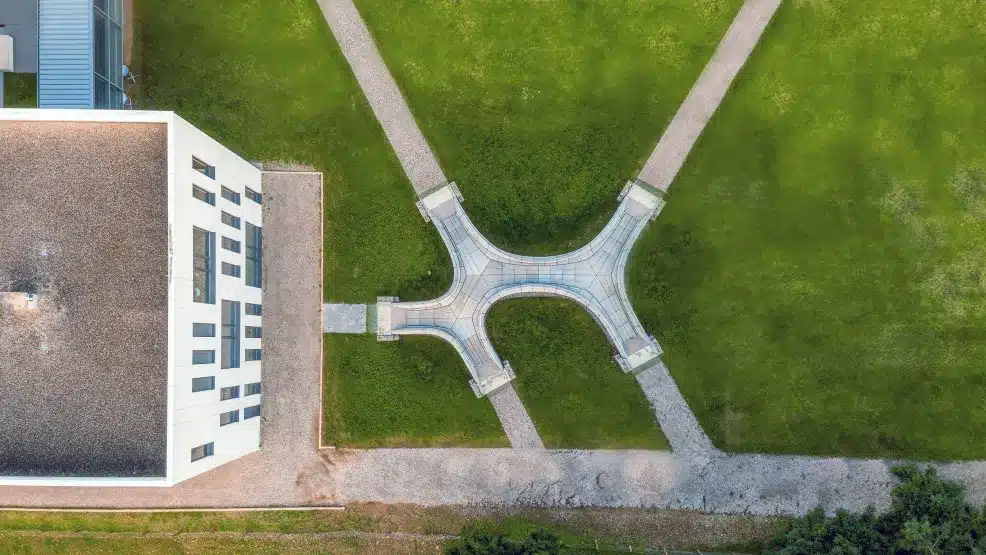
Constructed with 10 tons of recycled materials, including aggregates from Striatus, Phoenix boasts a proprietary concrete ink designed to achieve a remarkable 40% lower CO2 footprint than its predecessor. Holcim’s pioneering ECOCycle circular technology, combined with advanced computational design and 3D printing techniques, results in an impressive up to 50% reduction in material usage without compromising structural performance. Notably, Phoenix’s design, reliant on compression without reinforcement, facilitates effortless disassembly and recycling of its individual blocks.
Edelio Bermejo, Head of Global R&D at Holcim, expressed excitement about Phoenix as a symbol of sustainability and a tangible outcome of collaborative efforts to showcase the viability of circular and low-carbon infrastructure today. The project involved essential contributions from core collaborators and partners, including AMODIS, DEKRA, Groupe Noel, and Bürgin Creations.
Shajay Bhooshan, Head of the Computation and Design Group at Zaha Hadid Architects, underlined Phoenix as a significant milestone in technology readiness, highlighting improvements in digital design tools, structural design precision, circularity considerations, and the optimization of robotic concrete printing parameters.
Johannes Megens, Co-founder of incremental3D, expressed enthusiasm about Phoenix’s reduced carbon footprint, increased permanence, and the incorporation of various enhancements over its predecessor, Striatus. The incremental3D team looks forward to engaging in similar spirit-inspired projects in the future.
Philippe Block, Co-Director of the Block Research Group at ETH Zurich, elucidated the sustainable and circular approach to concrete construction facilitated by adhering to historical principles. He emphasized the significance of synthetic voussoirs and the precise placement of material made possible by 3D concrete printing, ultimately contributing to a genuinely sustainable and circular construction methodology.
Source: voxelmatters.com



